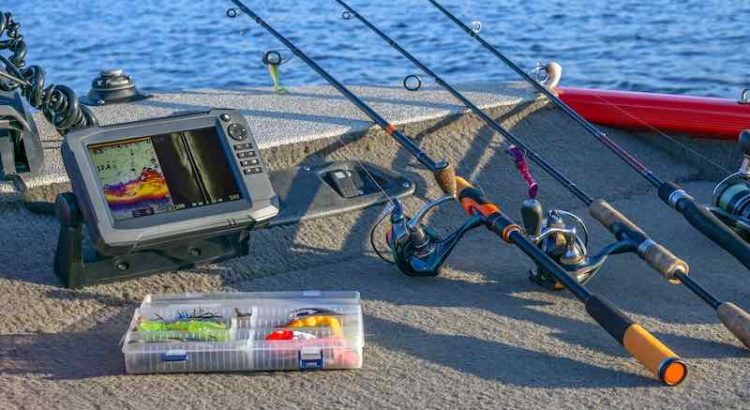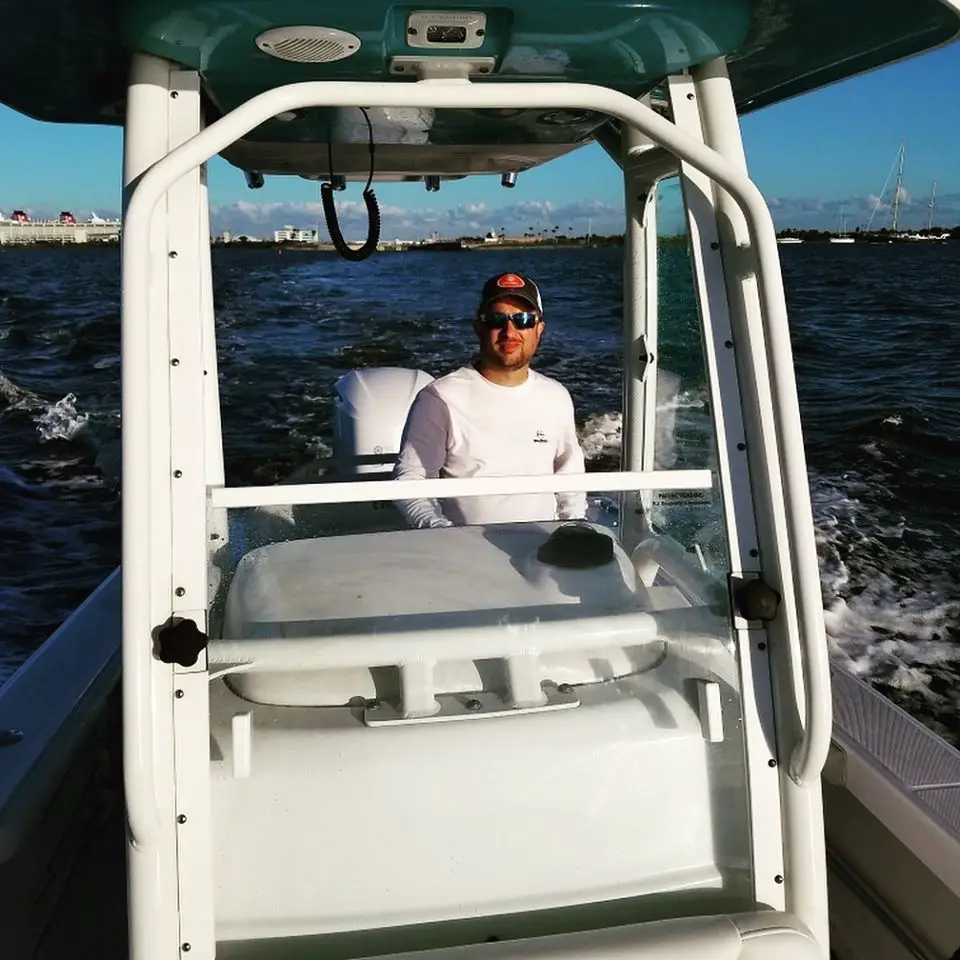This page contains affiliate links. This means that we may get a small commission for recommending products, if you choose to click on something and buy it. This does not cost you anything, but we wanted to be honest and let you know!
(Last Updated On: )Table of Contents
What is a fishfinder?
Fishfinder is a piece of portable equipment that tells you the story of the water beneath your boat.
It allows you to receive imagery of what’s underneath, locate where fish gather, and a perspective of how fish respond to your bait.
Learning how to read a fishfinder and be good at it will help you become a better angler.
Sonar technology is used on most fishfinders to flash a beam underneath and create an image in the water.
This way, you receive a certain amount of coverage beneath the waters. Sonar coverage may not give you an extensive result, but you can still read the screen sonar effectively by applying a few methods.

Colors and Returns
We could tell the intensity of the returns (image produced on the screen) based on the color.

The colored images are the history or things that the transducer passed over.

The jagged grey bar towards the right, between 0-40, is the A scope. The most newer fishfinders has an A scope, it shows what is under the transducer in real-time.

The yellow at the top is the surface. The reason why intense returns are up there is because of the numerous movements, and churning that happens on the surface.
There is an option to remove the returns from the surface, but it is not advisable for beginners, since baits are at times close to the surface.

The hard yellow bar on the lower part of the screen is the bottom of the water.
Palettes
An assortment of colors to represent the returns. For this video review, the chosen palette has yellow, reddish-orange, and blue colors.

Yellow – big fish or hard rocks get the hardest returns and are going to be yellow.

It allows us to understand that when we see a fish that is colored as yellow in return, we know it’s a good catch.

Then the colors fade out to reddish orange, blue then white.
Reddish orange – moderate return
Blue – Weakest return
White – No return

How does Sonar work?


A transducer produces a string of transmit pulses straight down to the bottom when they hit bottom they bounce back up and return to the sensor.

Anything that interrupted the pulses’ travel will show up on the A-scope.
The A-scope is what’s right under the transducer in real-time. Again, the color defines the strength of the return. In this case, yellow is the strongest, blue is the weakest, and the reddish-orange is in between.
The transducer behaves the way a flashlight would when lit. When you beam your flashlight 50 ft away, it’ll get a broader scope, and transducers work in the same manner.
If you flash the transducer straight down, it gets wider on the bottom and narrower on top. The deeper the pulses, the wider the cone, the more returns you’re going to get.
The strength of the return
If the fish finder is set up correctly and you are moving 4-6 miles per hour, arches should be like this. If you are getting half arches, the transistor might need to be adjusted.
The toughest return we can get from a fish is from the air bladder. As the boat moves, the transducers aim straight down and up a fish air bladder then down on the other side, which gives you an arched return.
If the vessel is not moving, the returns will have a long worm-like shape. If you are going slow and receive a substantial image, there is a bigger chance that the fish is just sitting right below the transducer.
It is causing redundancies on the return, making it seem bigger than its actual size.

If you see a lot of yellow arches, chances are there are bigger fish causing a more intense return.
Red or blue arches could mean smaller fish or it could mean it’s closer to the edge of the cone of the transducer giving off a weaker return.

There is a possibility that the fish are of the same size but positioned differently from the transducer.
When they are in the center, they will give a yellow return. If the fish is on the edge, they will provide a weaker return showing a blue image.

Most fishfinders include extra features by showing
- Depth
- Water temperature
- Frequency
On the image above it is showing a 27.7 depth.

Below the Depth is the temperature of the water where the transducer is sitting in.
If the transducer is a foot into the water, this number will show the temperature within a foot from the surface, not the temperature beyond that.
Frequency – It is the frequency where the transducer is operating at. The higher the frequency, the narrower the cone or scope.
If you plan to go on open water, you will need a lower frequency for a wider cone.
In conclusion
Fishing requires a lot of preparation, from your schedule, cabin, boat up to the bait that you’re going to use.
Learning how to read a fishfinder must not be excluded from your preparation, because it can turn a regular fishing day to your most unforgettable catch.
Although we can never force a fish to bite, we can step up the game by positioning our boats right.
Being well versed in reading a fishfinder will give you an edge as an angler by knowing where to cast the line.



